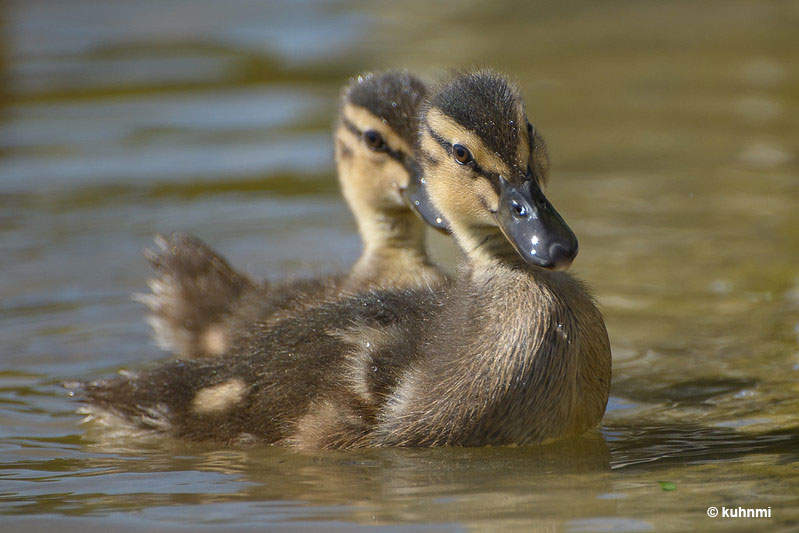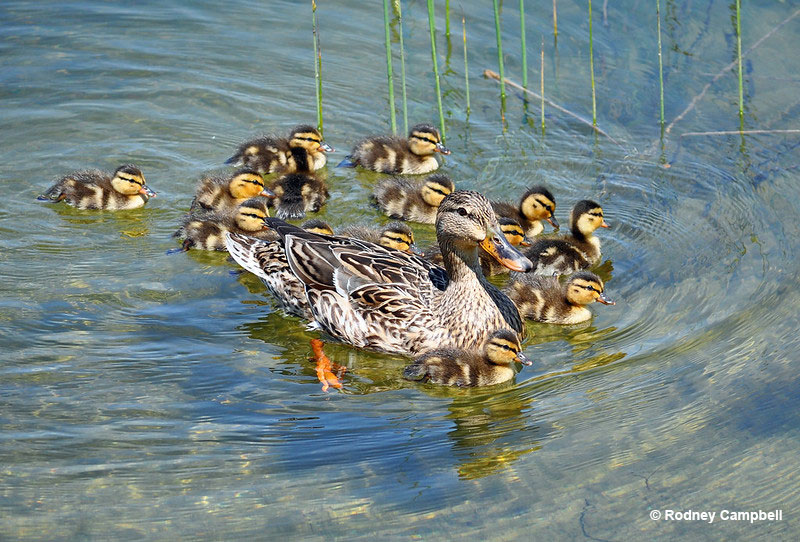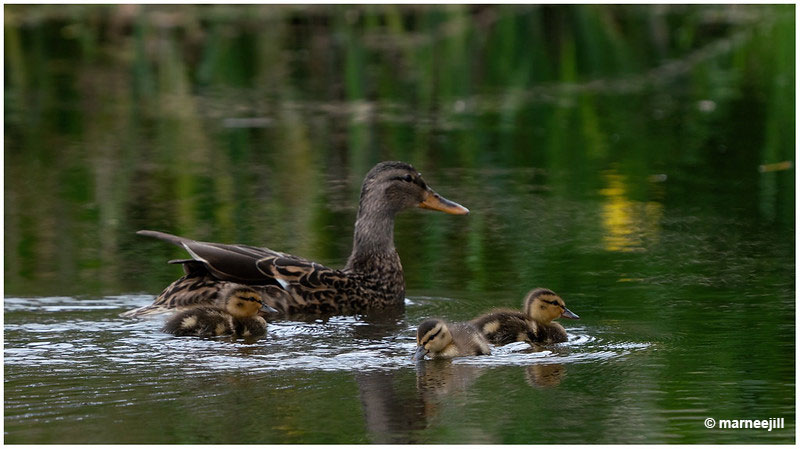
North America has at least 29 native species of ducks, each with its own unique characteristics and markings.
Baby ducks represent this diversity as well with different colors and patterns. You probably already know that a baby duck is called a duckling, but do you also know what their eggs look like and what they eat?
If not, then this article is for you!
On this page
Nest
Due to there being so many species of ducks, you’re bound to have many different types of nests and nesting sites.
There are three main types of nesters you can encounter: upland nesters, overwater nesters, and cavity nesters.
- Upland nesters build their nests on land, typically near water. These nests are usually just a slight depression in the ground that the mother duck lines with soft vegetation and her own feathers and down. Most species prefer it to be in a place camouflaged by vegetation. Such nesters are Mallards, Blue-Winged Teals, and Pintails.
- Overwater nesters build their nests on the water. They prefer semipermanent wetlands with quite deep water that has dense patches of emergent vegetation offering cover and protection. The nest is built of emergent vegetation, like cattails or bulrush, and can be woven into reeds or float on its own. You can see Canvasbacks and Redheads build nests like that.
- Cavity nesters build their nests in tree cavities that must have a hole big enough for adult birds to enter and room enough for a clutch of eggs. Since there are only a limited amount of suitable spots, these species, such as Wood Ducks and Hooded Mergansers, sometimes dump their eggs in another nest.
Eggs also vary in color. Most eggs are white, creamy, or brownish, but some species also have bluish and greenish eggs. On average, there are 8-15 eggs in a clutch that take around 28-30 days to incubate. The mortality rate is high, so it is expected that some are going to be lost.
Related: What do ducks symbolize?
Baby ducklings stay in the nest for around a week after hatching but stay close to their parents for another two months until they fledge. At that point, they join a nearby flock.

Photograph © Rodney Campbell
What Do They Look Like
There are many different types of ducklings, and their appearance depends on their species.
For example, Mallard and Northern Pintail ducklings have yellow and brown plumage, whereas a Peking duckling is bright yellow.
Goldeneye ducklings have black-and-white plumage and Cayuga ducklings are black all over! There are also mostly brown or gray ducklings.
What they all have in common is that they have thick fluffy down, they are small, and they have webbed feet. They weigh only around 1-1.5 ounces and measure around 4 inches long, although it varies a bit from species to species.
Ducklings reach skeletal maturity in 2-3 months, that is, they reach their adult size in that time. Juveniles develop their plumage in around 1-3 months so they may look similar to adults, most commonly similar to females.
Related: Baby Birds – From Hatching to Adulthood
Male plumage takes approximately one year to develop, so you can easily distinguish younglings from adults by their often patchy plumage.
What Kind Of Food Do Baby Ducks Eat?
For the first few days, baby ducks get their nutrients from their egg yolk. After that, they start foraging for their own food with their parents, or just the mother guiding them. Parents can help them by pulling edible matter up to the surface so the ducklings can feed better. The mother duck signals whether something is okay to eat or not.

Photograph © marneejill
Ducklings’ diet varies from species to species. Ducks are mostly omnivores and eat soft aquatic vegetation and small aquatic creatures, although preferences depend on the species.
Related: Is bread bad for ducks?
Some species, like Mallards, consume primarily plant matter, such as pondweed or algae. Other species eat small fish, insects, and crustaceans.
Overall, you can see them feasting on aquatic plants, algae, worms, insects, small mollusks and crustaceans, pondweed, and duckweed.
In captivity, you can feed them specific feed high in protein but also vegetables and fruits. You should also provide them with grit, as it helps them digest their food.
Frequently Asked Questions
What are baby ducks called?
Baby ducks are called ducklings.
Can baby ducks live in a house?
Technically, baby ducks can live in a house, but only if it’s a domesticated species. In this case, you should provide them with a private spot like a cardboard box that acts like a nest.
What does a baby duck eat?
Baby ducks eat soft plant matter, algae, worms, and insects.
When can baby ducks fly?
A baby duck will normally be able to fly within 5-8 weeks of age.
Conclusion
North America has many native and domestic species of duck with different nesting sites, eggs, and ducklings. You can find a duck’s nest over water, on the shoreline, or also in a tree cavity. Egg colors range from white and creamy to bluish and greenish.
Baby ducklings can be yellow, brown, black, gray, white, or a mix of those colors, but all of them have thick down and webbed feet. They start foraging their own food under their parents’ supervision already from the first week after hatching.
Whether you’re observing them in their natural habitat or captivity, baby ducks are a fascinating display of nature’s diversity.
